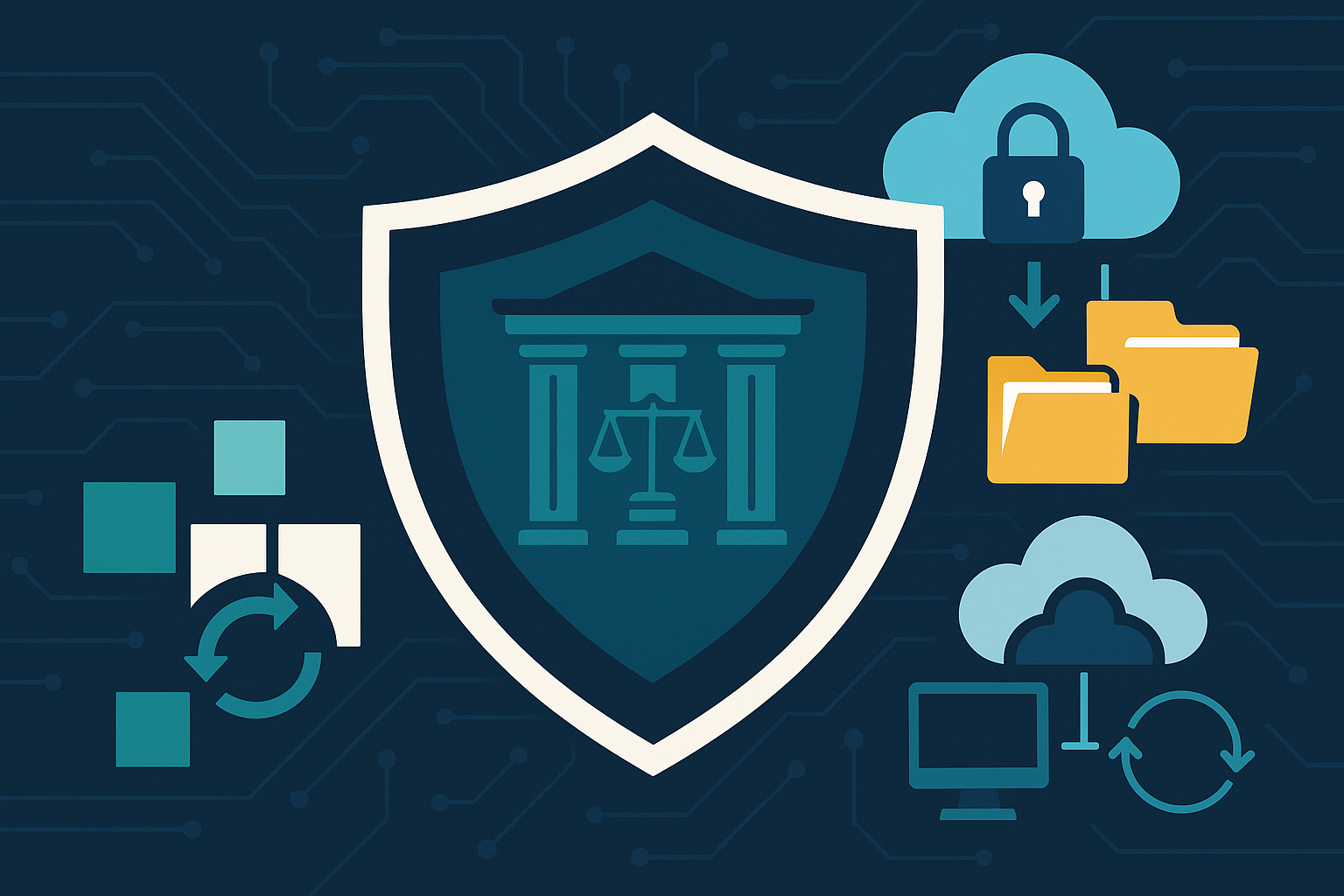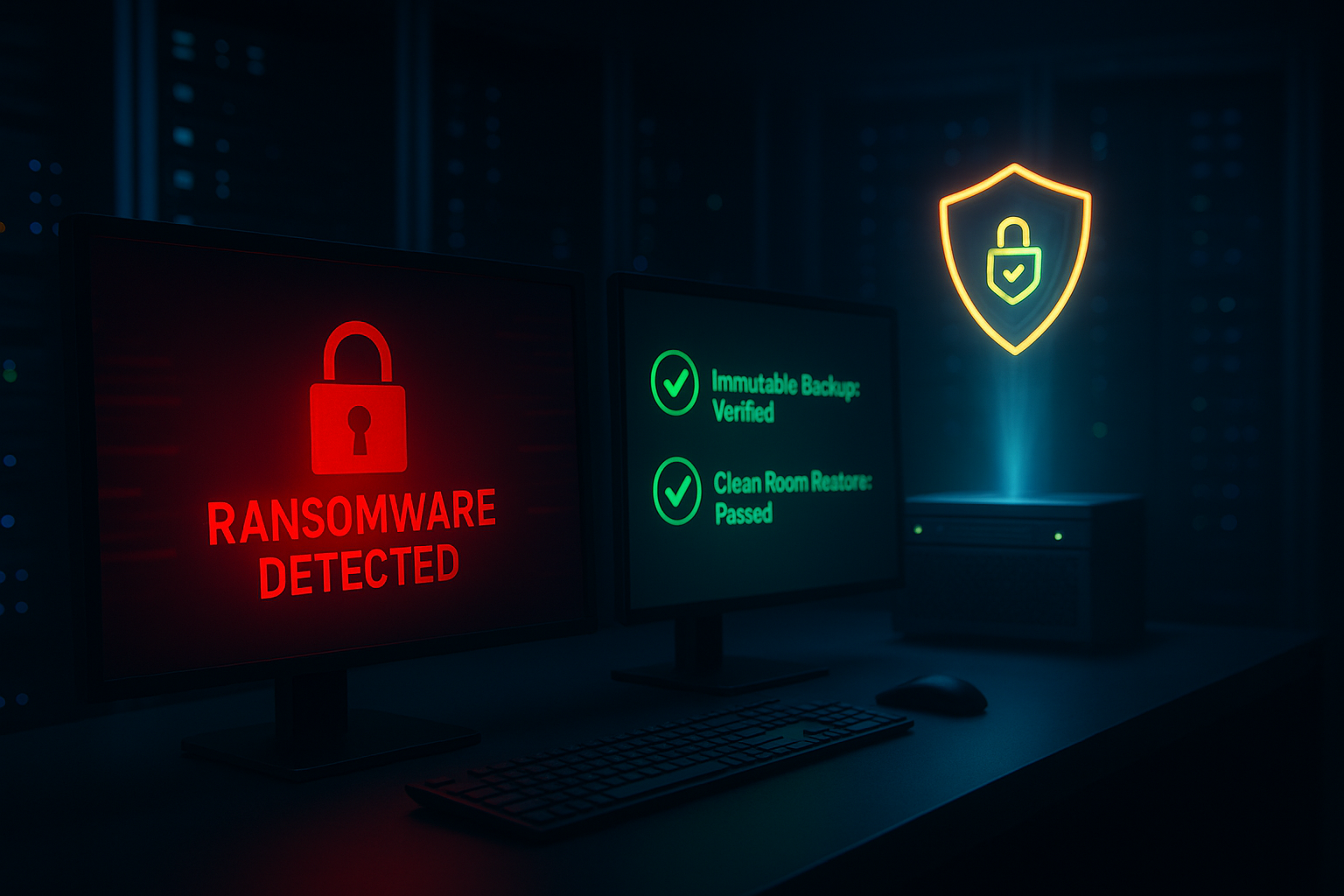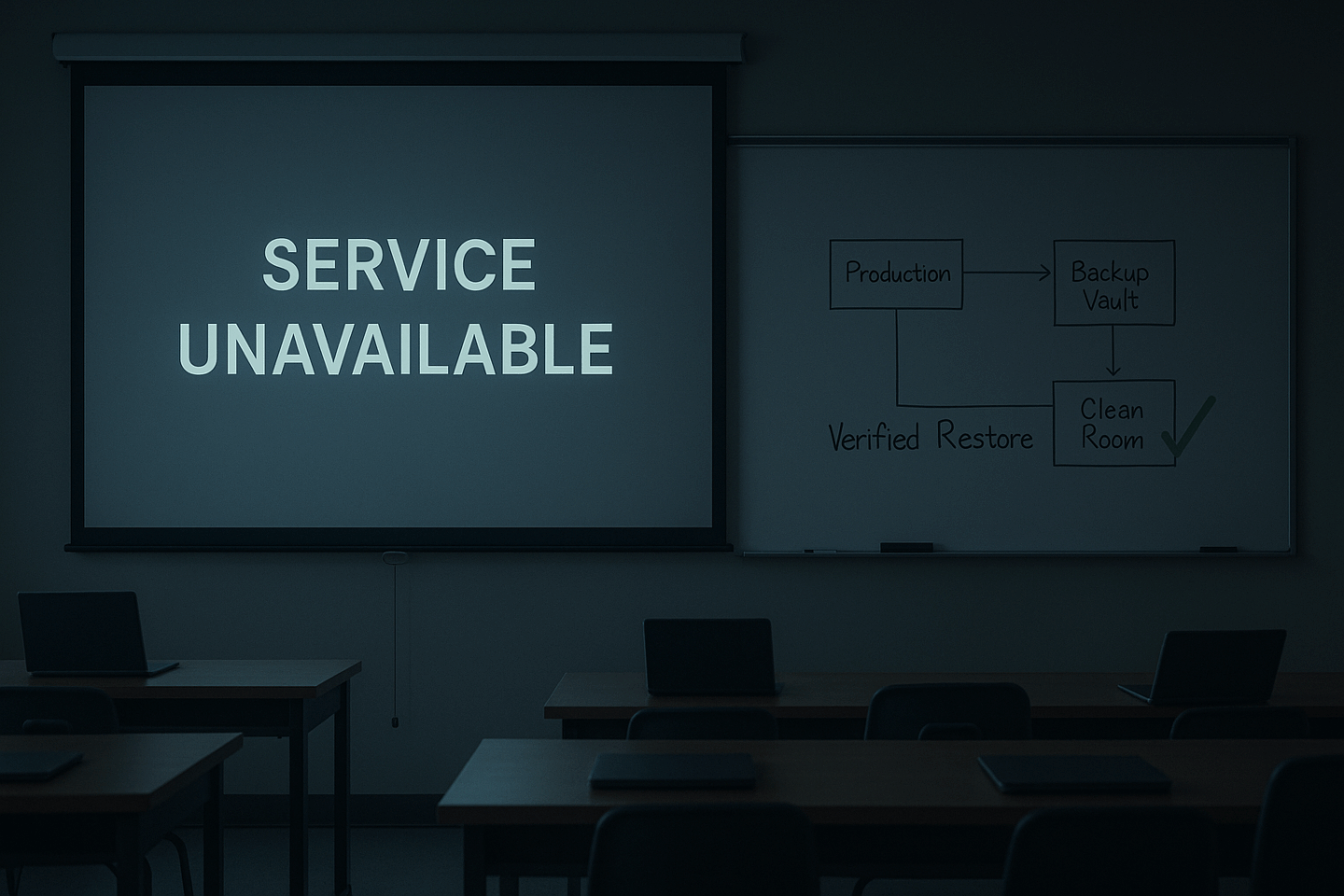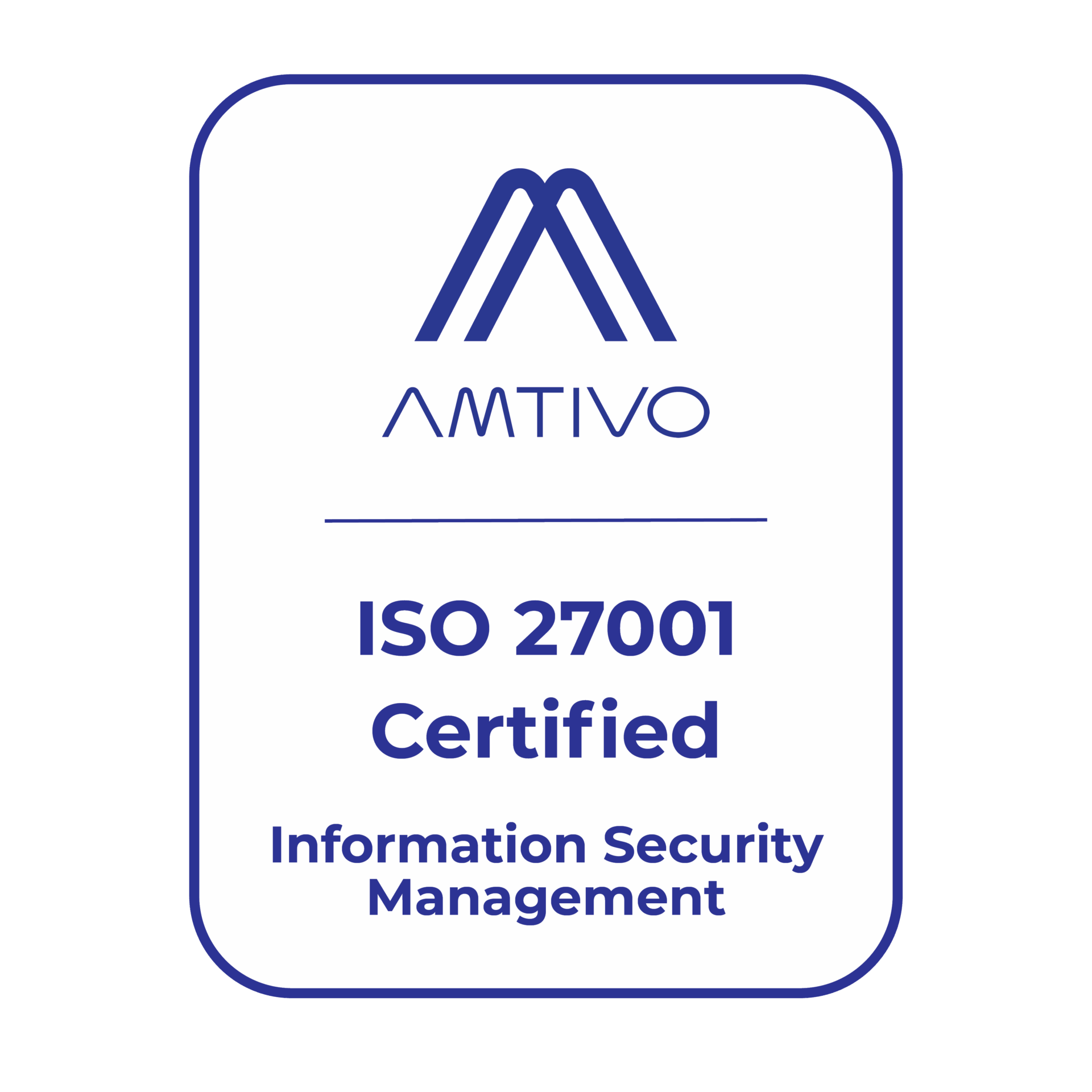DATA PROTECTION TRENDS, NEWS & BACKUP TIPS
Setting RTO and RPO Goals with Veeam: A Practical Guide for Confident Recovery

The Challenge of Downtime
It’s the nightmare scenario for any IT manager at a small or mid-sized business: systems go dark, data is unreachable, and the clock is ticking. In that panicked moment, two questions loom largest – How quickly can we get everything running again? and How much recent data might we lose? These questions boil down to your Recovery Time Objective (RTO) and Recovery Point Objective (RPO). Many mid-market organizations struggle to pin down realistic RTO and RPO targets. The good news is that with some planning (and the right tools), you can set achievable goals that keep your business safe. This guide will demystify RTO and RPO, show why they matter, and help you feel confident about the targets you choose.
Understanding RTO and RPO
RTO (Recovery Time Objective) is essentially your downtime tolerance. It defines the maximum time you can afford for critical systems to be offline after an incident before your business is significantly impacted. Think of RTO as the answer to: “How quickly do we need to recover operations?” If a server failure or cyberattack happens at noon, and you set an RTO of 4 hours, that means you aim to have all systems back up by 4:00 PM at the latest. The shorter the RTO, the faster you need to recover to avoid heavy losses in productivity, revenue, or customer trust.
RPO (Recovery Point Objective) is your data loss tolerance. It sets the maximum amount of data (measured in time) you could lose if a disaster strikes. In other words, RPO answers: “How much work can we afford to lose?” If your most recent valid backup is from 11:00 AM and the system crashes at noon, your data recovery point is one hour old – meaning you’ve lost one hour of data updates. An RPO of one hour would consider that an acceptable loss. A shorter RPO (say 15 minutes) means you need more frequent backups or replication so that, in the worst case, you’d only lose 15 minutes of data. RPO is all about preserving data integrity and minimizing how far “back in time” you have to go when restoring files or databases.
In simple terms:
- RTO is the maximum downtime your business can tolerate (how quickly systems must be recovered).
- RPO is the maximum data loss your business can tolerate (how recent your last backup should be).
These two metrics are two sides of the disaster recovery coin. A fast RTO gets your operations running again, and a tight RPO ensures you haven’t lost critical information when you do recover.
Why Do RTO and RPO Matter?
What begins as an IT disruption can ripple through every part of the business. Studies have found that the average cost of IT downtime is over $1,400 per minute. Even for mid-market firms, every minute of systems being offline can mean lost sales, halted production, frustrated customers, and a bruised reputation. Similarly, lost data can be devastating: imagine a day’s worth of orders or patient records simply gone. For some industries, data loss isn’t only a financial hit but also a compliance and trust issue (think of client financial transactions or medical information).
By defining clear RTO and RPO goals, you set expectations that guide your entire backup and recovery strategy. These metrics help you answer questions like: How much revenue would we lose if our website is down for an hour? Can we tolerate that? If not, we need a plan to recover faster. Or, If we lost a day’s worth of data, could we recreate it from other records? Would customers forgive us? Your RTO/RPO targets are essentially a compromise between what the business needs (to stay viable) and what is feasible given your resources. Setting them properly means fewer sleepless nights worrying about “what if” scenarios, because you know you have a plan to meet those targets if disaster strikes.
Moreover, clear RTO and RPO objectives help in communication and confidence. Your leadership and stakeholders don’t want technical jargon, but they do want assurance that the company could survive an outage. Being able to say “we can be back online in two hours, with no more than 15 minutes of data loss” provides a concrete, comforting promise. It’s far better than vague statements like “we backup our data regularly and hope for the best.” In short, RTO and RPO turn abstract fears into measurable, manageable targets, which is empowering.
Setting Realistic Targets for Your Business
Every organization is unique, a mid-market online retailer might have different RTO/RPO needs than a regional hospital or a manufacturing company. It’s tempting to say “we want zero downtime and zero data loss”, but such ultra-tight objectives can be extremely costly (or sometimes technically impractical) to achieve. The key is to balance ambition with reality. Here’s how to set RTO and RPO goals that are both achievable and appropriate:
- Perform a Business Impact Analysis: Start by identifying your critical applications and processes. For each, ask “What happens if this is down for X hours? What if we lose data from the last Y hours?” Determine the cost of an outage per hour or minute for each major system – not only in dollars, but in operational disruption and customer satisfaction. For example, an e-commerce website going down might cost thousands in lost orders per hour, whereas an internal HR system being offline might be inconvenient but not immediately revenue-impacting. Prioritize systems that have the highest business impact for faster recovery.
- Consider Customer Expectations and Compliance: Your RTO may be influenced by how long your customers or users can tolerate a service outage. Service-level agreements (SLAs) or industry regulations might mandate certain recovery times or data protection levels. If you’re a software provider promising 99.9% uptime, that translates to a very small allowable downtime (roughly 8.7 hours per year). Similarly, laws in finance or healthcare may effectively require very short RPOs because losing too much data could violate record-keeping rules or put lives at risk.
- Assess Data Change Frequency: How often does the data in a given system change? This will guide your RPO. For rapidly changing data – say, a transactional database for sales or a patient medical record system – even an hour of data loss might be unacceptable. Slower-changing data, like an archived document repository, might allow a longer RPO. A key question is “How much data (in time) can we recreate or re-enter if we had to?”. If the answer is “none” (for instance, you can’t recreate orders that were never recorded), then your RPO needs to be very low for that system.
- Account for Interdependencies: Some systems might be more tolerable in isolation but not when considering dependencies. If System B relies on data from System A, then System A’s recovery point and time might dictate System B’s requirements too. Make sure to coordinate RTO/RPO targets among interlinked applications. Often, you will set tiered goals – e.g. Tier 1 (most critical services) have very aggressive RTO/RPO, Tier 2 can have slightly more lenient targets, and so on.
- Balance Against Resources: Achieving a shorter RTO or RPO often requires investment in better tools, infrastructure, or services. There’s no shame in admitting that a 15-minute RTO for all systems might be out of reach for a 200-employee company if it means duplicating entire data centers. Weigh the cost of downtime vs. the cost of prevention. In many cases, you’ll find diminishing returns – going from a 4-hour to a 1-hour RTO might be hugely beneficial, but improving from 1 hour to 5 minutes could cost exponentially more. Set targets that meaningfully reduce risk to the business, but are still within budget and capability. You can always refine these targets over time as technology (and budgets) improve.
Remember, setting RTO and RPO is an exercise in understanding your business’s risk tolerance. Engage both IT and business stakeholders in this process. The numbers you settle on should reflect a consensus: “Yes, we’re comfortable that we could be down for __ hours and lose __ minutes of data at most. Beyond that, the damage would be too high.” When everyone agrees on those thresholds, you have a solid foundation for your disaster recovery plan.
Real-World Examples of RTO and RPO Goals
What do RTO and RPO look like in practice? They can vary widely by industry and company size. Here are a few examples that illustrate how different organizations set their targets:
- Healthcare Provider (Mid-sized Hospital): Patient care can literally be a life-or-death matter, so critical systems need speedy recovery. A hospital might determine that its electronic health records system must be back online within about 4 hours of an outage, and no more than 1 hour of patient data can be lost. Less critical systems (like a scheduling portal) might have a slightly longer RTO of say 6 hours. In this case, the hospital would aim for very frequent backups – possibly every 15 minutes – to meet an RPO of 15 minutes for its most vital databases. This ensures that even in a disruption, doctors and nurses can see nearly up-to-the-minute information when systems are restored.
- Financial Services (Regional Bank): In finance, downtime directly erodes customer trust. A mid-market bank might set an RTO of 1 hour for its online banking platform – customers should be able to access their accounts again quickly even after an incident. The RPO for transactional data could be as tight as 15 minutes or less, meaning the bank’s databases are backing up continuously or in real-time replication. For example, ATM networks might have an RPO of 30 minutes, and the core banking system (handling account records) perhaps 1 hour, balancing the need for fresh data with the complexity of recovery. These targets ensure minimal disruption; a 15-minute RPO for online banking might mean only a few latest transactions need to be re-entered manually, if any.
- Manufacturing Company (Mid-market Manufacturer): Manufacturing may tolerate a bit more downtime in IT systems if there are manual workarounds, but not for long. A manufacturing firm might decide that its production line control system could be down for up to 3 hours at most – beyond that, factory operations and deliveries would grind to a costly halt. Supporting systems like inventory management might have an RTO of 4 hours. On the data side, this manufacturer might aim for an RPO of around 1 hour for production data – losing an hour’s worth of shop-floor data or orders is manageable, but more could cause confusion in inventory or shipping. By backing up crucial databases hourly (or continuously syncing orders to an offsite system), they keep data loss within that 1-hour window. These goals mean if a disruption occurs, assembly lines can be brought back up by lunchtime if they went down at 9 AM, and order data will be current to within 60 minutes of the outage.
As you can see, RTO/RPO targets differ by context. The hospital needs tighter timing than, say, the manufacturer, due to the nature of impact. The important thing is that in each case, the organization thought through what they require and set concrete numbers. Once you have those numbers, you can architect your backup and recovery strategy to meet them.
Achieving Your RTO and RPO Goals with Veeam and DRaaS
Setting targets is only half the battle, you also need the tools and processes to meet those RTO and RPO targets. This is where modern backup and disaster recovery solutions come into play. Many mid-market businesses are turning to cloud backup and Disaster Recovery as a Service (DRaaS) offerings, such as those powered by Veeam, to achieve enterprise-grade resilience without the enterprise-scale cost and complexity.
Frequent, Efficient Backups: To hit a low RPO, you need backups or replications happening at a frequent interval. Traditional nightly backups might give you a 24-hour RPO (losing up to a day of data), which may not be acceptable. Veeam’s backup technology allows for very frequent backup schedules, even as often as every 15 minutes in some configurations. Impressively, these rapid backups can be done without hogging resources or impacting your servers’ performance. In practice, this means even a smaller firm can keep nearly up-to-the-minute copies of its data. If an incident occurs, the data restored is fresh – possibly just minutes old – dramatically minimizing loss.
Fast, Reliable Failover: Meeting a tight RTO means having a way to restore operations quickly. Veeam-based DRaaS solutions excel here by enabling features like replication and “instant recovery.” For example, Veeam can maintain standby copies of your critical virtual machines in a cloud data center. If your primary server fails, a clone of it in the cloud can be spun up immediately. Failover can be automated or one-click, reducing what used to take hours down to minutes. Some managed DRaaS providers (like CyberFortress with Veeam) even guarantee recovery times. In fact, for systems that cannot tolerate lengthy downtime, it’s possible to achieve RTOs and RPOs under 15 minutes using continuous replication and expert planning. Essentially, your backup environment becomes a live mirror of your production – ready to take over at a moment’s notice.
Testing and Expert Support: A plan on paper isn’t enough; you need to know it will work when needed. Veeam’s platform allows for non-disruptive recovery testing. You can routinely verify that backups are recoverable and that failover procedures succeed, without interrupting your ongoing operations. This builds confidence that your RTO/RPO targets aren’t just theoretical. Additionally, having a trusted partner’s support can be invaluable. CyberFortress, for instance, is a Veeam Cloud Service Provider that specializes in managed backup and DR. With a team of experts available 24×7, they act as caregivers for your data by monitoring backups, troubleshooting issues, and even proactively assisting during a crisis so you’re never alone when disaster strikes. This aligns perfectly with what a mid-market IT team needs: knowledgeable guidance and an extra set of hands in high-pressure moments.
Right-Sized Solutions: One of the advantages of leveraging a service is flexibility. Cloud backup and DRaaS can often be tailored to your specific RTO/RPO needs and budget. Maybe you require ultra-fast recovery for only a handful of critical servers, you can replicate those continuously while less critical data is backed up once daily. Veeam’s solutions are very scalable: you can protect a small office or a sprawling enterprise with the same technology. This means you pay for the level of protection you need, system by system. By working with professionals to design the strategy, you ensure that your backup plan isn’t overkill or underpowered, but just right.
In the end, achieving strong RTO and RPO outcomes is about combining the right goals with the right tools. A mid-market business today doesn’t need a secondary data center of its own to get rapid recovery. With cloud-based backups, replication, and expert-managed services, even smaller teams can reach ambitious RTO/RPO targets that would have been out of reach a decade ago. The result is peace of mind. You know that if something goes wrong, whether it’s a ransomware attack, hardware failure, or natural disaster, your data is safe and you can be back online quickly.
Confidence in the Face of Disaster
Disasters and downtime will always be a possibility, but they don’t have to spell doom for your business. By understanding and setting clear RTO and RPO goals, you take control of how your company will weather the storm. It transforms panic into a plan. With those targets in hand, technologies like Veeam Cloud Backup and managed DRaaS give you the power to deliver on the promise of fast, reliable recovery. Think of it like a safety net woven by both wisdom and care: you’ve made wise choices about what your business needs and you’ve enlisted caring experts and tools to safeguard your company .
In the journey of building resilience, you are not alone. Whether you run a 50-person firm or a mid-market enterprise, the combination of thoughtful planning and modern backup solutions can protect what you’ve worked so hard to build. Set your RTO and RPO with confidence, knowing that with the right preparation, even the worst day won’t break your business. When the unplanned happens, you’ll be ready to respond quickly, calmly, and with your data intact. That is the true measure of success in any IT recovery plan.






